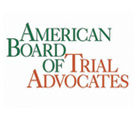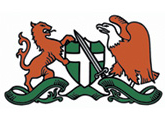Even though rideshare services are cheaper and more convenient than traditional taxis, that does not mean they are safer. Rideshare drivers can commit the same mistakes and safety regulation violations that lead to taxi collisions. For example, they may become distracted by their phones, the radio, or when interacting with their passengers. Or they may fail to look out for motorcycles or cars when making turns or changing lanes.
When crashes occur due to rideshare drivers' negligent mistakes, victims can suffer the same serious injuries associated with other vehicle accidents. If you have been hurt in a ridesharing accident, you are probably vexed by the severe, painful injuries you have sustained and dismayed at how huge your medical expenses will be. Luckily, a rideshare accident attorney can help you recover damages for your pain and suffering, medical bills, and other losses you have suffered.
How Ridesharing Services Work
Technically called TNCs (Transportation Network Companies), ridesharing companies are regulated under the CPUC (California Public Utilities Commission) and the Public Utilities Code. Lyft and Uber are California's two most prominent of these companies. There are fourteen licensed ridesharing companies in California. Apart from Lyft and Uber, the CPUC has issued licenses to nine other general ridesharing companies and three ridesharing companies that offer services exclusively to minors.
The Public Utilities Code sets the minimum automobile insurance requirements for ridesharing companies and drivers and requires ridesharing services to perform background checks on motorists.
Victims of crimes or accidents committed or caused by rideshare companies have several possible remedies, including:
- Lyft and Uber accident suits
- Suing for battery or assault by a rideshare passenger or driver, and
- Sexual assault lawsuits by Lyft or Uber drivers
In addition, drivers who suffer injuries while working for ridesharing companies or believe the company violated their work conditions could file a wage and hour suit against the relevant company. Victims could also file consumer complaints with the Public Utilities Commission.
How Ridesharing Services Differ from Taxi Services
TNCs differ from limousine and traditional taxi companies in many aspects:
- Drivers need not accept a particular rider or ride
- Motorists set their schedules
- TNCs usually have less notable signage and visual displays
- Drivers usually drive their automobiles and are accountable for fuel and maintenance
Additionally, a taxi must carry a commercial auto insurance policy that remains applicable 24/7, whether or not the motorist is at work. With ridesharing companies, the service's commercial insurance policy only applies when passengers are in the car, or the motorist has logged into the app and is searching for passengers.
Whenever the motorist is off work, only their personal auto insurance applies. Individual insurance can be as low as the minimum California 15/30/5 policy, meaning the insurance covers at most:
- Fifteen thousand dollars in compensation for injury or death to one individual for a single accident
- Thirty thousand dollars in compensation to be split among everyone injured or killed in a collision
- Five thousand dollars in compensation for property damage, including vehicle damage
Factors Contributing to Ridesharing Accidents
With hundreds of rideshare automobiles on the roads today, it is not surprising that more collisions occur. Among the factors that contribute to ridesharing accidents are:
- Rideshare motorists work long hours, and most of them work multiple jobs, which raises the risk of driver fatigue
- TNCs do not conduct adequate background checks on drivers—rideshare motorists must have been licensed only for a year before hiring. They are also not fingerprinted or drug tested.
- Rideshare motorists use their smartphones to pair with passengers and GPS to navigate, increasing the likelihood of driver distraction while driving.
Other factors contributing to ridesharing accidents are running a stop sign, speeding, a driver using a mobile phone to call or text, and driving while intoxicated with drugs or alcohol. Eventually, ridesharing collisions result from driver negligence and the negligent mistakes of other drivers. To prove negligence in a ridesharing accident, you have to show that:
- The liable party owed you a duty of care; they were supposed to use reasonable care when driving, including watching out for obstacles, pedestrians, and other vehicles or pedestrians.
- They breached that duty through their negligent behavior; for example, they texted while driving or were intoxicated, so they could not drive cautiously as a reasonable driver would
- Their negligence was a primary factor in causing your injuries. For example, you can argue that you suffered a chest or head injury because the liable party drove while intoxicated.
- You suffered damages like medical expenses, lost wages, disfigurement, et cetera, thanks to your injuries.
Rideshare passengers are not the only people who can fall victim to ridesharing accidents. Pedestrians and occupants of other cars can also sustain injuries.
Insurance Coverage In Ridesharing Accidents
Whether you are pursuing damages for an Uber or Lyft accident, you will need a lawyer to assist you in navigating the claim filing process. A lawyer will investigate the accident you were injured in, gather invaluable evidence, and pursue a claim or lawsuit with the ridesharing company and its insurer.
It is essential to know that rideshare services have insurance policy limits. The limit on the amount of cash you can receive after winning an insurance claim is based on the facts surrounding your accident. Ridesharing companies have insurance policy limits in these scenarios:
Scenario 1: The Ridesharing App Was Off
If the ridesharing app were off at the time of the accident, the driver’s personal auto insurance would be the primary source of coverage. Drivers are required under the law to purchase a personal insurance policy limit that meets the state’s minimum car insurance requirements of 15/30/5. That means the personal rideshare insurance policy that a driver carries must cover at most:
- Fifteen thousand dollars of physical injury coverage per individual injured or killed in a collision
- Thirty thousand dollars of bodily harm coverage total per crash
- Five thousand dollars of property (including vehicle) damage coverage per collision
Scenario 2: The Ridesharing App Was On, But The Driver Had Not Connected With a Passenger
If the rideshare motorist had the ridesharing app on but was still looking for a passenger to give a ride at the time of the accident, the rideshare company’s and the motorist’s personal insurance would cover your compensation. Whereas the motorist’s personal insurance would apply first for any collision, if their insurance does not fully cover the amount of the claim, the ridesharing company will provide coverage up to:
- Fifty thousand dollars of bodily harm liability coverage per individual injured in a collision
- A hundred thousand dollars of physical injury liability coverage total per crash
- Thirty thousand dollars of property damage liability coverage per collision
The driver’s ridesharing company must also provide at least two hundred thousand dollars in additional liability insurance.
Scenario 3: The Motorist Was Giving a Ride or Had Accepted One
The insurance policy limits will differ if the Uber or Lyft motorist caused an accident when they had already linked up with a passenger and were en route to pick them up or if the passenger was in their vehicle and was in the middle of a ride.
In this case, the ridesharing company must have one million dollars in commercial vehicle liability insurance, which will be the main source of insurance coverage for damages. Ridesharing companies must also carry one million dollars in underinsured and uninsured motorist bodily injury coverage.
Rideshare collisions can be more complicated when another driver shares responsibility for the crash. Based on the facts surrounding your case, your claim might involve the rideshare motorist’s insurance company, the rideshare service’s insurance provider, and the other driver's insurance company.
Note that these laws only apply to rideshare motorists, not taxi or limousine drivers, as they have their own commercial automobile insurance requirements.
Liability In Ridesharing Accidents
Liability for a crash involving a Lyft, Uber, or other ridesharing driver is based on three factors, all of which have unique implications regarding recovering compensation. For example, the same liability rules and regulations do not necessarily apply when a person is hurt as a rideshare passenger vs. when someone is a passenger or driver of another vehicle.
Fault, comparative fault included, also contributes to how different kinds of rideshare collision claims or lawsuits are settled. These factors are:
The Party That Caused the Collision
If you were a pedestrian, passenger, or driver of another vehicle and were hit by a ridesharing automobile or driver, the driver is generally considered negligent. In this case, ridesharing companies carry liability and insurance, so you and your lawyer may pursue damages from the involved company and/or motorist based on the facts of your case.
Whether the Injured Person was the Ridesharing Service's Passenger When the Accident Occurred
If you are a passenger in a ridesharing vehicle and the motorist causes a collision because of wrongful conduct or negligence, in which you end up injured, you can pursue damages from the ridesharing company.
If you are a paying passenger taking a rideshare ride and the rideshare vehicle is struck by another car, causing an accident in which you are injured, and the rideshare motorist is not to blame, you must bring a third-party claim. Since the rideshare motorist was not to blame, you must file a third-party claim against the liable driver.
There are cases where the liable driver is underinsured or has no insurance. In this case, you can still pursue damages since, as mentioned above, rideshare services must carry one million dollars in underinsured and uninsured motorist coverage (UIM/UM).
Whether the Motorist was on Their Own Time, Searching for Passengers, Driving a TNC-Referred Passenger, or Using a Ridesharing App
This last element is the most critical one, as it determines whether or not you can pursue damages in relation to the other two factors and who you can sue. A driver who causes an accident is only at fault when they are on their own time, irrespective of whether or not they work for a ridesharing company.
Once a motorist begins using a ridesharing app, the ridesharing company and its insurance provider also assume responsibility. The motorist's passengers, pedestrians, and passengers in other vehicles may all pursue compensation from the motorist and these companies.
Negotiating Rideshare Collision Settlement
Before your lawyer sends a demand letter to the ridesharing company’s insurance provider, they will identify all the monetary and non-monetary losses you have experienced because of the accident. Once the lawyer understands how the crash has altered your life, they will know the amount of money you should recover from an accident claim.
Even though ridesharing companies’ insurance policy coverages are impressive for injured victims, it does not necessarily imply their insurers will be easily willing to grant fair compensation. You will need a highly experienced rideshare accident lawyer to negotiate a settlement offer that pays for all your accident-related medical costs and satisfies your needs.
Recoverable Damages in Ridesharing Accidents
You can file a suit if the insurer does not want to cooperate with your lawyer's requests and declines to offer fair compensation. Your lawyer can file the suit for you in court, aggressively fight for you, and request that you be awarded the compensation you are entitled to.
If you win your lawsuit, the types of damages you may recover include the following:
- Medical bills
- Out-of-pocket expenses
- Property damage and vehicle repair costs
- Lost wages
- Diminished quality of life
- Diminished future earning capacity
- Emotional distress
- Disfigurement
- Mental anguish
- Pain and suffering
- Disability benefits
- Loss of enjoyment of life
- Rehabilitative care costs
- Psychological counseling costs
On rare occasions, the court grants victims punitive damages. These damages are limited to situations where the liable party acted recklessly, intentionally, or with fraudulent intent in causing the accident that led to the injuries. For example, if the ridesharing company knew the driver was negligent but attempted to cover their involvement, you can claim punitive damages.
If your loved one dies in a ridesharing accident, you can claim wrongful death damages by filing a wrongful death claim or lawsuit as a surviving family member. Wrongful damages include medical expenses while the victim was still undergoing treatment, funeral and burial expenses, loss of support and companionship, loss of consortium, et cetera.
Whereas there are caps on the compensation amount you can recover from a ridesharing crash insurance claim, California places no cap on the compensation amount you can recover from an accident lawsuit. Regardless of how much the at-fault party's insurance company owes you, a skilled lawyer can help recover it all.
What You Should Do After Being In Rideshare Collision
There are some crucial steps to follow if you have been hurt in a ridesharing accident. Following these measures can assist you in protecting your well-being and right to just compensation:
Seek Medical Care
Your well-being is one of the essential aspects of a ridesharing accident insurance claim or lawsuit. If your injury or injuries do not enable you to reach the nearest hospital, do not worry. Call for an ambulance to take you to the hospital. A lawyer can take charge of your claim and accident investigation once you have been treated.
Gather Evidence and Information
If you have suffered painful or severe injuries, you can gather several essential pieces of evidence and information to assist your case and your lawyer. First, contact law enforcement and brief them. Remember, do not admit guilt or provide any details beyond simple facts.
Next, you will want to exchange contact and insurance details with the motorist. After you have obtained their information, capture photographs of the accident scene, vehicle damage, and your injuries. Also, talk to anyone at the scene who might have witnessed the accident. Ask the witnesses whether they would be comfortable testifying in your favor if it comes to that, and take their addresses or phone numbers.
Call a Lawyer Immediately
Once you have documented the crash and sought medical treatment, hire an attorney immediately. The California statute of limitations law allows victims only twenty-four months to bring a suit, counting from when the accident occurred. Failure to file your lawsuit within two years will result in your losing the right to recover the compensation you deserve.
Hiring a lawyer soon ensures your lawsuit is filed promptly. A rideshare accident lawyer can also assist you in scheduling appointments and receiving the quality medical attention necessary to recover from your injuries.
Find a Personal Injury Attorney Near Me
Although TNCs provide convenient travel, accidents are not part of the bargain. That said, you are entitled to compensation if you are injured in an accident caused by a rideshare vehicle. With the help of a skilled ridesharing accident personal injury lawyer, you can file an insurance lawsuit or claim against the responsible parties and recover damages for medical expenses, lost wages, rehabilitation, pain and suffering, et cetera.
At Los Angeles Car Accident Attorney, we boast the skills and knowledge to hold TNCs and their motorists responsible for the injuries victims suffer due to the accidents they cause. Once you become our client, you can rest assured that we will be by your side every step of the claims or lawsuit process, fighting to defend your rights and recover the maximum compensation you deserve. Call us today at 424-237-3600 for a consultation and to learn more about how we can help.






